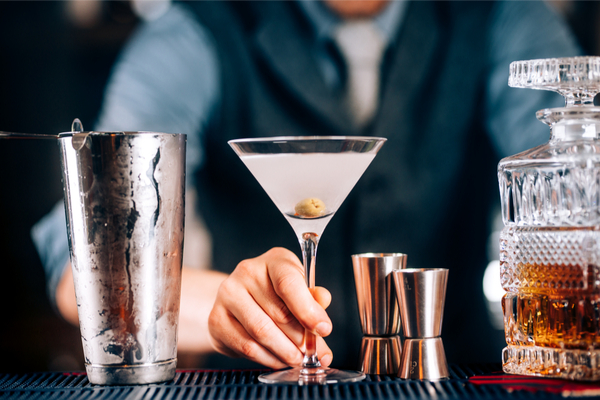No other cocktail has the mystique of the martini. And on June 19, National Martini Day, you’d do well to consider all the ways you can run afoul of the martini police.
Here, according to the purists, are what is not a martini:
If it’s sweet, it’s not a martini.
If it’s got more than a thimble’s worth of vermouth in it, it’s not a martini.
If it’s any of the following colors — green, pink, blue, orange, red, chartreuse — it’s not a martini.
If it’s called any of the following things — blueberry martini, vanilla martini, cosmopolitan, metropolitan, appletini — it’s not a martini.
For true believers, the rules of what constitute a martini are as rigid as a soldier at attention. Gin. Vermouth — as little as humanly possible. Olive. The end.
Dry? Need you ask?
True connoisseurs will compete with each other about the Saharan, Gobian, Kalaharian lengths they will go to reduce the vermouth to a trace element. “Connoisseurs who like their martinis very dry suggest simply allowing a ray of sunlight to shine through a bottle of Noilly Prat before it hits the bottle of gin,” reports William Grimes in his entertaining book “Straight Up or on the Rocks: The Story of the American Cocktail.” Noël Coward once remarked that “a perfect Martini should be made by filling a glass with gin, then waving it in the general direction of Italy.” Really strict martini lovers will argue whether vodka is even permissible, or whether a twist is beyond the pale. And let’s not even get into the infamous 007 question: shaken versus stirred (shaking it bruises the juice, you brute!). Perhaps we should all relax. Have a drink.
Where did the martini come from? Why is it called the martini? No one knows for sure. One theory is that it was originally called the Martinez Cocktail, and named after the gold-rush town of Martinez, California. Others maintain that it was named after Martini & Rossi vermouth, or Martini di Arma di Taggia, a bartender at the Knickerbocker Hotel in New York. Wherever it came from, and whoever it was named after, it seems to have been a fixture in American saloons by the 1880s. But it was during the prohibition era, when — thanks to quirks in enforcement — gin was slightly easier to obtain than other spirits, that the martini really came into its own. “The only American invention as perfect as the sonnet,” said the 1920s wit H.L. Mencken.
For his generation, the martini was king — and remained so throughout the 1930s, 40s, and 50s, when a three-martini lunch was as essential to a businessman as a gray flannel suit. After that, the martini took a dip in popularity, until the 90’s, when Sex and the City brought it back with a sweet, definitely non-classic version called the Cosmopolitan. Soon we were seeing Lemon Drops, Appletini’s, and the like in every color and twist imaginable. Martini purists call it “the dark days.”
But whether you like it sweet and fruity or dry and classic, go out (or shelter in place) and celebrate martini day by raising your glass and having it any way you want it. But just in case you want it the right — ahem, classic — way, here’s one recipe, courtesy of William Grimes.
3 ounces gin or vodka
French (dry) vermouth to taste
Lemon twist or olive
In an ice-filled shaker, pour in a ratio of five to one for a dry martini, or use as little as one or two drops of vermouth for an extra-dry martini. Shake, then strain into a chilled martini glass. Garnish with lemon twist or olive. Garnishing with a pickled cocktail onion makes the drink a Gibson.
Salud!
—
Photo Credit: bogdanhoda / Shutterstock.com
